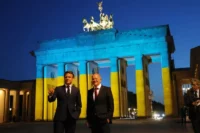
Why a European Army Makes No Sense
Ever since it was first proposed in the 1950s, the idea of a European army has not gone anywhere, but it keeps rearing its ineffectual head. Now, as Europe faces the urgent need to boost its defenses against a neo-imperialist Russia seeking to reshape the continent’s post-Cold War order through war, the idea of a joint military is once again swirling around European capitals. With the European Union’s recently released defense industrial strategy and plan to appoint a European commissioner for defense, one might conclude that the idea of an EU military and defense policy could finally take off. But as in the past, this is a dead end.… Seguir leyendo »




